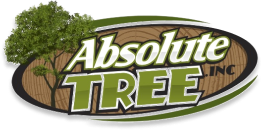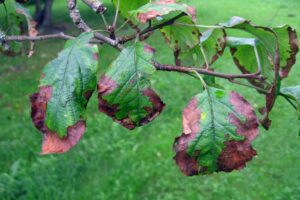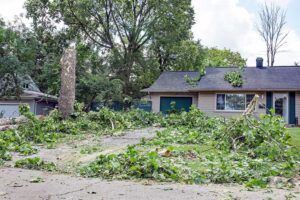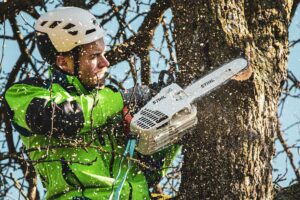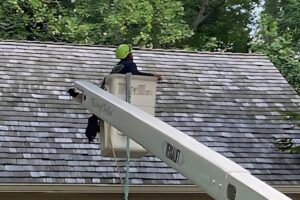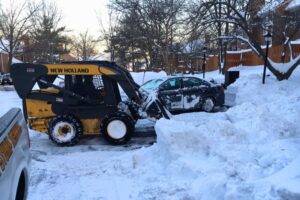Did you know that the flowering dogwood is the Virginia state tree? Or that the flowering dogwood is also the state flower?
There is a reason for the high prevalence of dogwood trees in Virginia. Flowering dogwoods are one of the most stunning native beauties you will stumble across on the east coast. The species also known as cornus florida develops as an ornamental gem, gracefully overflowing with angelic white or pink petals.
As the perfect accent for any home or business, show your Virginia pride by planting moderately low-maintenance dogwood tree varieties. Bird watchers will be enthused with the wild birds attracted to the flowering dogwood berries.
Keep reading to learn how easy it is to plant and grow dogwood trees in Virginia and start appreciating the natural beauty for yourself!
Gem of the East Coast
Accenting the eastern cost of North America from Ontario all the way to Florida, the flowering dogwood is a small, obviously flowering, deciduous tree. With adequate maintenance and care, a fully mature tree stands between 10-15 feet tall.
While we typically envision dogwoods with magnificent white leaves, the truth is they bloom just as beautifully in pink and even red! Including multiple variations in your landscaping plan creates an enchanting visual display.
Bright red berries grow alongside the flowers, attracting exotic wild birds to feast on the fruit. If you’re a bird lover who has been seeking ways to attract new species, planting dogwood tree varieties will undoubtedly help accomplish that goal.
Selecting a Dogwood Variety
Over 15 variations of dogwoods trees are available, each thriving under the climate and habitat of different coastal geographies. When growing dogwoods in Virginia, ensure to choose a cultivar (cultivar is a fancy word for a specific plant variety, or in this case a type of dogwood) that Virginia soil and climate can foster.
It’s unlikely to stumble upon a more dazzling native tree on the east coast, but there is one minor hiccup to look out for: anthracnose. Anthracnose is fungal plant disease occasionally known to attack the leaves, flowers and fruit of dogwood trees.
Rest assured, resistance to anthracnose naturally exists in many Dogwood cultivars including Cherokee Chief, Cherokee Brave, Cherokee Sunset, Weaver’s White and Welch’s Bay Beauty. Since the disease can spread to other plants on the property, seek these cultivars to decrease the likelihood of contracting anthracnose.
Any tree can succumb to tree disease or infestation, making it essential to stay alert and informed of symptoms. Diligence is your best defense against any serious tree damage, which is why we encourage annual tree inspections to catch any incubating intruders on your property.
How to Plant a Dogwood Tree
In order to fill your yard with bountiful dogwood blooms, trees needs to be properly planted and maintained. While this species is known for it’s low maintenance nature, there is sort of a tried and true method for planting protocol.
Is your property ideal for growth? Virginia dogwood trees achieve optimal growth in moist soil with a slightly acidic/neutral pH and a hardiness zone of 5-9.
Dogwood tree varieties flourish best when purchased as potted trees or bare-root trees at your local nursery. In terms of placement, locations that are moderately sunny with little shade will nurture your dogwood to full maturity. However, placing the tree in direct sunlight can hinder growth.
We recommend growing Dogwood trees as an understory, strategically placed under a canopy of taller trees with substantial, dominate presence. Ensure that adequate sunlight will still reach your dogwood, but towering counterparts act as filtering protection.
Final tip for planting: try to place trees in an area that doesn’t receive heavy lawn mower traffic. The roots can occasionally grow close to the surface, leaving them susceptible to blade damage (which can open a wound to diseases and pests).
Caring for Your Low-Maintenance Dogwood
The flowering dogwood isn’t a brittle tree, and caring for the species won’t be much hassle for your landscaping routine. As with planting almost every tree, maintain a healthy layer of mulch to keep soil moist.
Once the tree has grounded roots and become established, watering is unnecessary except in times of drought. With tender and attentive care, expect beautiful blooming flowers to appear in late April to early May.
With trees actively producing flowers and fruits, it is absolutely essential to perform seasonal pruning and trimming. Bring in a professional arborist to walk you through the process, because trimming in the wrong areas can stunt or even prevent further growth.
Call Absolute Tree for Virginia Tree Care Service!
If you are in need of tree service, would like a FREE estimate or have any questions for our team, call us today at (703) 969-6207. You can also click here to contact us online now.
Absolute Tree Service, Inc. is a full tree service company serving Northern Virginia. From planting dogwoods in Virginia to pruning and trimming them in winter, our team of certified arborists is licensed, accredited and insured.
For the Absolute Best Tree Service in Northern Virginia, call Absolute Tree Today!
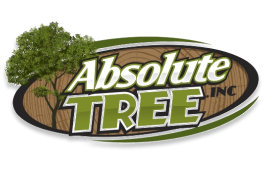
Author Profile: Ashley Davis
Over the last 19 years, Absolute Tree has grown a reputation as one of the premier tree service companies in the Northern Virginia areas. And there’s a good reason for this—we love trees and our passion for them shows. When you call on Absolute Tree for tree service, you aren’t just getting “some guys who cut down trees.” You’re hiring highly skilled arborists who understand the growth of trees and consider tree care an art form.
Stay Up-to-date!
Swing in each month for new articles, pest alerts, local resources, tree care tips, tree health updates, and landscape maintenance ideas
